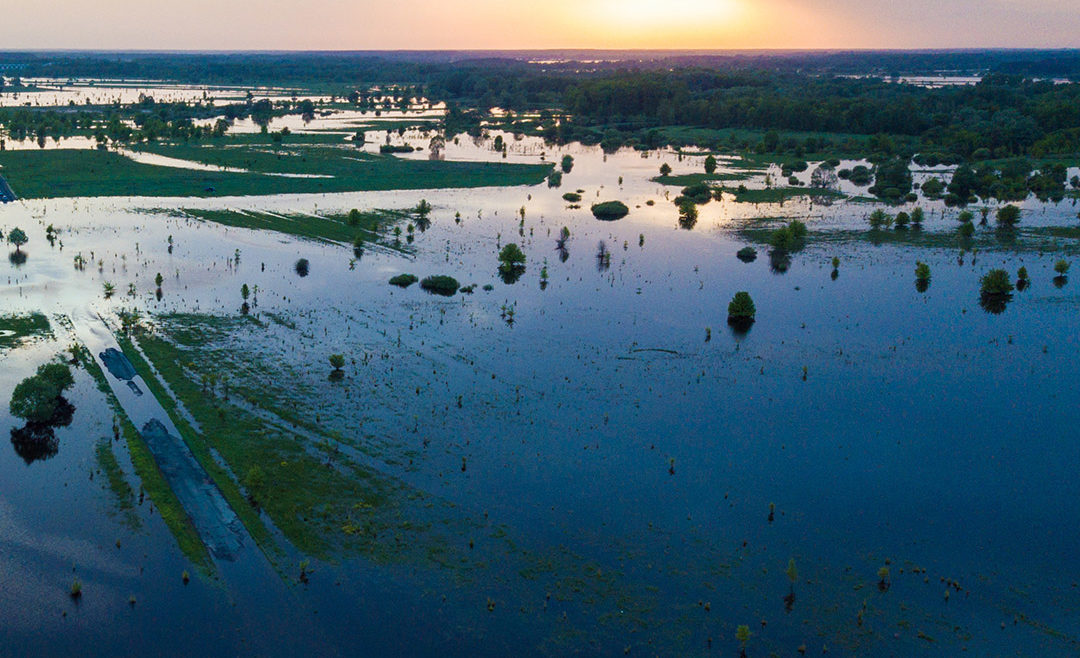
Water well maintenance during floods
After flooding, private well owners and municipalities should take actions to ensure their well water is safe for consumption. When a water supply well has been affected by flood waters, the water within the well may be contaminated with bacteria or other microorganisms that can cause serious illness in humans and pets.
If you believe that your well has been contaminated, discontinue using your well water for drinking and cooking purposes, and use only disinfected or boiled water.
Steps to take:
1. Assess the condition of your well
A flood will leave warning signs that your water well may be unsafe. Most private wells have the pump located inside the well casing and submerged, so well owners will probably not be able to inspect the pump. Well owners should contact a qualified professional, licensed well driller or pump contractor to evaluate and service well pumps.
2. Repair the damage
To avoid damage to the well: mud, silt and other debris should be removed from the well casing, cap, and all accessible components. Be sure electricity is off before you clean any electrical components. Floodwater carries large debris that can dislodge parts of the well and distort or crack the well casing. Floodwater may also deposit a large amount of sediment in the well. If an excessive quantity of mud, silt or debris has entered the well, the pump may need to be removed to be cleaned. If any of these conditions are observed, you should have professionals repair your system.
3. Disinfect your well
Shock chlorination is a process designed to inactivate harmful bacteria within the well and distribution system. For wells contaminated by bacteria as the result of flooding, shock chlorination should effectively reduce the bacteria levels. Shock chlorination is not intended to provide disinfection of the aquifer beyond the immediate location of a well. Unless you are familiar with water wells, and are comfortable working with chemicals, the disinfection process should be done by a licensed water well driller or licensed plumber.
4. Basic water testing
After a contaminated well has been properly disinfected and the chlorine has been flushed out of the water system, the water should be tested to confirm that bacterial contamination has been removed. If chlorine odors persist, you may have to do additional flushing or wait several days before testing to be sure that all the chlorine has been flushed from the water system. Until testing shows that the water is free of bacterial contamination, you should continue to use disinfected or boiled water.
5. Follow basic hygiene practices
- Always wash hands with soap and water before eating food and after handling articles contaminated with flood water.
- Avoid prolonged exposure to flood water.
- Wear protective gloves, boots and eye wear.
- Bathe or shower in clean water as soon as possible after exposure to flood water.
- Use insect repellents to discourage biting insects.
- Obtain water from a known safe public water supply or buy bottled water.
- Don’t drink water from flooded wells unless the well has been properly disinfected and then tested for drinking safety.
- Contact your local county health department for a free flood sampling container and advice.
- Residential Tips in more detail:
https://www.cleanwaterstore.com/technical/water-treatment-guides/Floods-And-Your-Well-Water.pdf
https://www.health.ny.gov/publications/6562.pdf
Municipality Tips in more detail:
https://www.wpr.org/how-heavy-flooding-can-damage-drinking-water-quality
Source:
